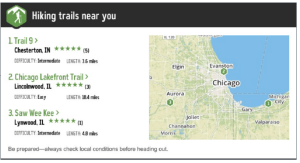— June 28, 2018

Free-Photos / Pixabay
There’s no question that companies with highly engaged employees are more successful. Gallup research found that teams with engaged employees performed better in terms of customer ratings, profitability, and productivity with much lower turnover and absenteeism rates. Companies with an average of 9.3 engaged employees for every actively disengaged employee not only had higher earnings, but also recovered from market-induced setbacks faster than companies with lower ratios.
Unfortunately, only about 32% of employees are considered engaged, which means that over two-thirds are either actively disengaged or indifferent. The challenge for any organization is to find ways to boost engagement. Leaders at all levels play an important role in this process as their behaviors and actions have a direct impact on how employees feel about their jobs. Effective leaders inspire employees to embrace the organization’s mission and greatly contribute to its success; ineffective leaders will cause the best employees to walk out the door.
Organizations can take a number of steps to make sure they’re promoting engagement. While some of these measures are challenging to implement, the costs of allowing a toxic culture of disengagement to take root are far too serious to ignore.
Implement Comprehensive Onboarding and Training
The first opportunity to drive engagement is during an employee’s initial onboarding and training process. If employers do not take the time and effort to help new hires understand their responsibilities and role within an organization, employees will be left confused, frustrated, and potentially overwhelmed. This is a recipe for disengagement. If employees aren’t clear about what they’re supposed to be doing or why their work matters, it will be difficult for them to take pride in it or justify devoting more time and energy to their job.
During the onboarding process, new employees should also have the opportunity to ask questions and voice concerns. If they feel their questions are not being taken seriously or ignored altogether, they will very likely come away with the impression that the organization doesn’t care about their success or failure.
Onboarding also provides a critical time for employees to bond with coworkers and managers. No one likes to work in a place where they feel isolated or unwelcome. Research has shown that camaraderie is one of the most important factors motivating employees to put the extra work needed to exceed expectations.
Acknowledge Good Work
Everyone likes being recognized for a job well done. While praise and acknowledgment may not turn disengaged employees into engaged ones, failing to recognize a highly engaged employee’s good work can quickly undermine morale. Although it may sound overly simplistic, recognition is an effective and low-cost strategy good leaders can implement on a daily basis to maintain high levels of engagement.
It’s startling, then, that Gallup research has shown that 2 out of 3 employees feel the good work they’ve done routinely goes unrecognized. This is hardly a matter of assuaging egos; employees who don’t feel properly recognized are twice as likely to quit.
Recognition shouldn’t only be coming from leaders, of course. With so many people working in teams in the modern workplace, encouraging peer-to-peer feedback and recognition can be extremely valuable in helping employees feel valued and appreciated.
Communicate Values and Goals
The most effective leaders find ways to align an organization’s goals with an employee’s sense of purpose. They articulate the company’s values and vision for the future in a way that helps employees understand how they fit into the larger picture and what they can do to carry out that mission.
Employees are more likely to be engaged in workplaces that reflect their values. They want to know how their work makes a difference within the organization, as well as how it affects the people they work with. By clearly defining goals, employees also get a better understanding of what’s expected of them in either the short or long term, allowing them to hold themselves and other employees (and the organization) accountable.
Provide Development Opportunities
Understanding their future within an organization is very important to today’s employees, especially millennials. Effective development programs should not only highlight career paths, but also help employees to develop new skills that will make it possible for them to take on new roles in the future.
Focusing on employee development demonstrates that the organization cares about their employees and is willing to make an investment in them. This helps employees feel valued and establishes the foundations of trust. Collaborative development plans give employees a great deal of ownership over their careers, which drives them to set more challenging goals for themselves.
Leaders can further facilitate employee development by providing extensive feedback and supporting their education efforts. It can be easy to fall into a pattern of leaving engaged employees to pursue goals on their own, but checking in frequently to offer guidance and advice goes a long way toward making them feel valued and appreciated.
Engaged employees bring significant advantages to organizations, ranging from increased profitability to reduced turnover. By focusing efforts on boosting engagement, companies can get the most out of their employees, harnessing their passion and creativity to better pursue organizational goals while helping them to advance their own careers.
Business & Finance Articles on Business 2 Community
(78)








